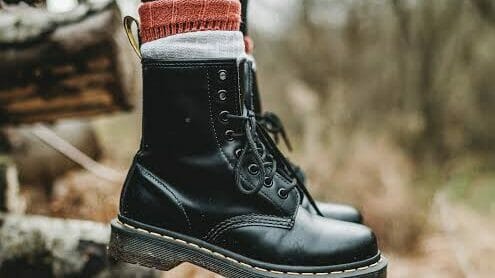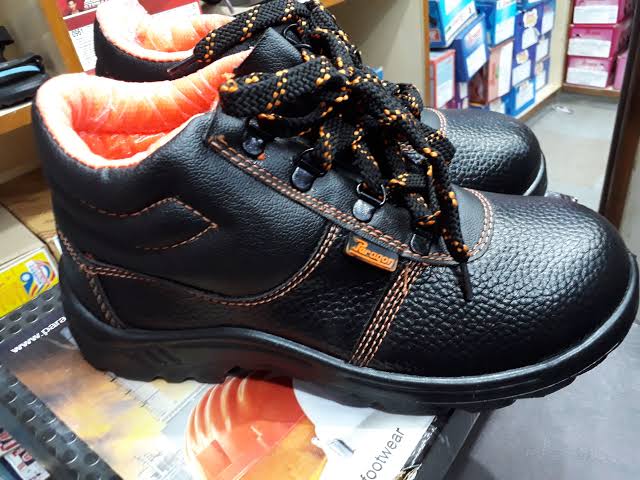Confusing Question: Are Safety Shoes Good For Hiking
Safety shoes are designed with the primary purpose of protecting the wearer’s feet in industrial and hazardous environments, have gained attention for their potential suitability in hiking scenarios. Because people might think that these shoes may also help them to protect their feet in the wilderness. But is it possible?

Safety shoes are good for hiking if you are hiking on straight trail with less difficulties and problems. But why you cannot wear them on a tough hike, so in this article, we will delve into the question: “Are safety shoes good for hiking?”
Are Safety Shoes Good For Hiking
Safety shoes and hiking boots may seem similar at first glance, but upon closer observation, significant differences emerge.
It’s essential to recognize these disparities to make an informed choice when it comes to footwear for various outdoor activities.
Traction
When examining safety shoes, one of the initial distinction is their sole difference. Hiking boots are crafted with robust lugs on the outsole, designed to provide exceptional traction on challenging terrains.
These lugs grip onto uneven surfaces, rocky paths, and slippery trails, ensuring a stable and secure foothold. In contrast, safety shoes generally lack the substantial lug patterns seen on hiking boots.

This deficiency in lug strength is a significant drawback for those who venture into more demanding wilderness areas. For avid hikers who enjoy exploring rugged trails, the absence of substantial lugs on safety shoes becomes a notable limitation.
These shoes may struggle to maintain traction on challenging surfaces, potentially leading to slips and falls.
The consequence of this limitation is that safety shoes are best suited for less strenuous hikes and easier trails, where the terrain is more forgiving.
Shiny Surface
Second distinction feature is their shiny surface. Safety boots often exhibit a distinct shine, a feature primarily associated with their protective function in industrial and work settings.

This characteristic contrasts with the rugged and earthy aesthetic of traditional hiking boots. This aesthetic dissimilarity might make safety shoes less appealing for outdoor enthusiasts who prefer the classic, natural look of hiking boots.
And if you’ll wear safety boots in hiking than the mud and dust of trails could damage the look and shine of hiking boots.
Similarities between Safety And Hiking Boots
Safety shoes and hiking boots serve different purposes and are designed for specific activities. Safety boots and hiking boots, despite their primary differences, do share some similarities:
Ankle Support
Both safety boots and hiking boots often feature high-cut designs that provide excellent ankle support. This support helps prevent sprains and injuries by stabilizing the ankle during various activities.
Durable Materials
Both types of boots are typically constructed from durable materials like leather or synthetic materials. This durability ensures a longer lifespan for the footwear, making them suitable for demanding environments.
Comfort
Modern safety boots and hiking boots incorporate ergonomic designs to enhance wearer comfort. They often have cushioned insoles and padded collars, reducing fatigue during extended wear.
Sturdy Construction
These boots are built with strong stitching and well-structured soles, making them capable of withstanding wear and tear over time. This sturdiness contributes to their longevity.
Water Resistance
Many safety boots and hiking boots are designed to be water-resistant or waterproof. This feature keeps the feet dry in wet conditions, whether you’re navigating muddy worksites or hiking through rain-soaked trails.
Variety of Styles
Both types of boots come in various styles, allowing wearers to choose based on personal preferences and specific needs. This variety includes options like steel-toed safety boots, hiking boots with different levels of insulation, and more.
Protection
While the primary purpose of safety boots is workplace protection, they do offer some level of general foot protection, which can be beneficial during outdoor activities. Similarly, hiking boots provide protection against rough terrain and potential hazards on the trail.
Lace-Up Design
Most safety and hiking boots feature a lace-up design, allowing wearers to customize the fit for comfort and stability. Properly laced boots can provide better support and prevent foot fatigue.
Conclusion
Safety shoes prioritize protection in industrial settings, while hiking boots are designed for optimal performance on challenging outdoor terrains.
Understanding these differences will help you make an informed decision about which type of footwear best suits your intended activities.


